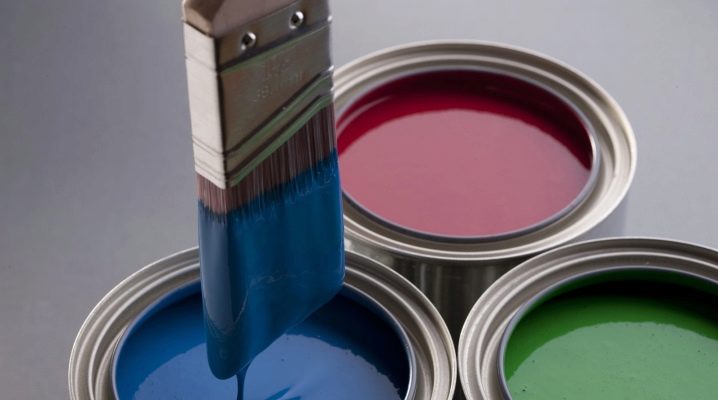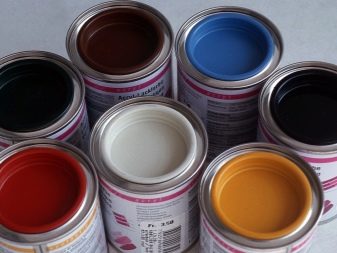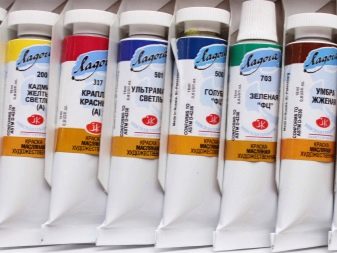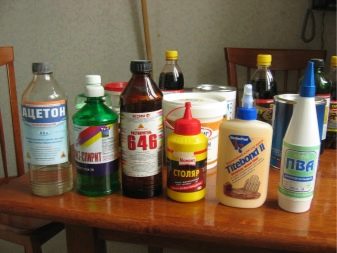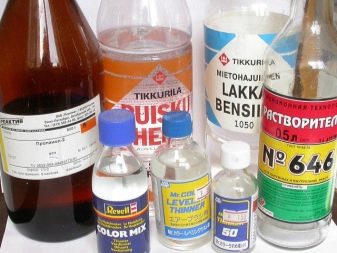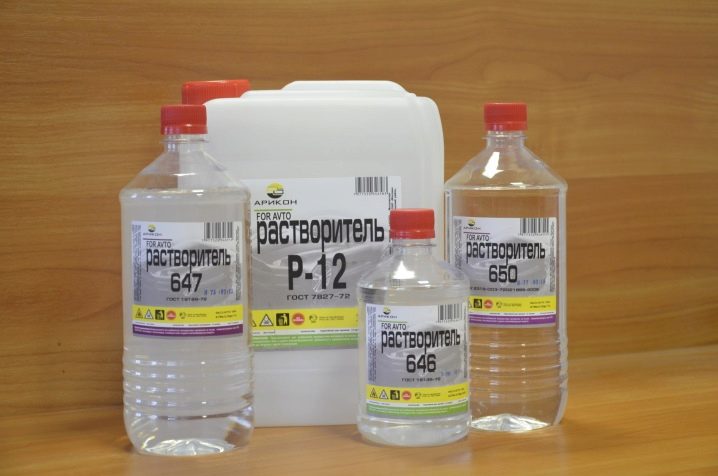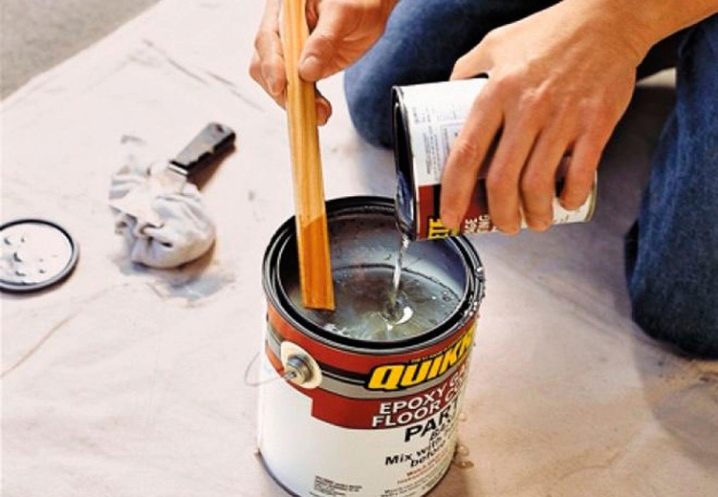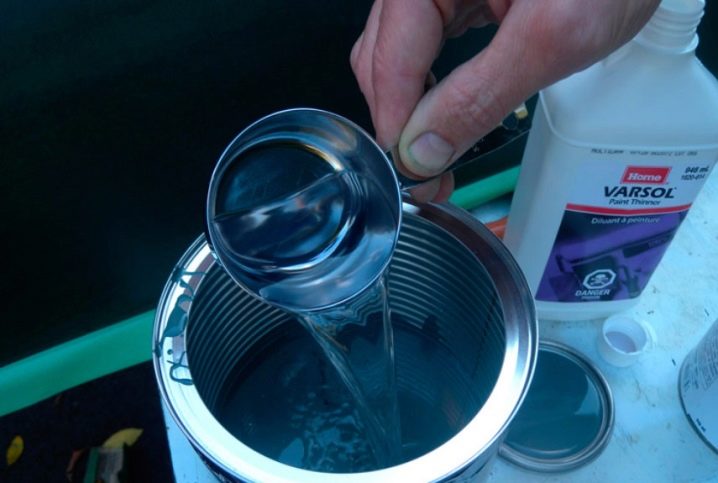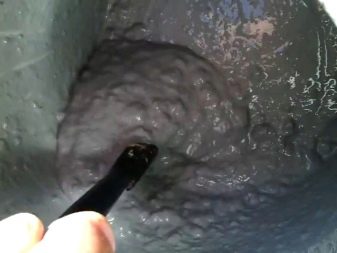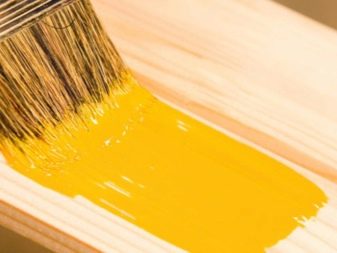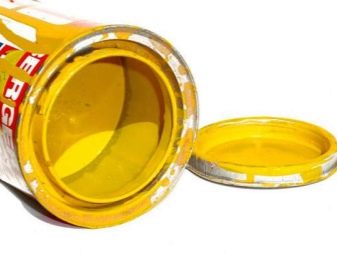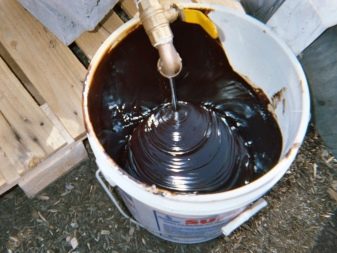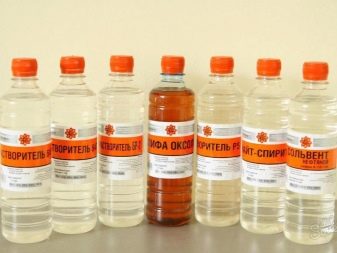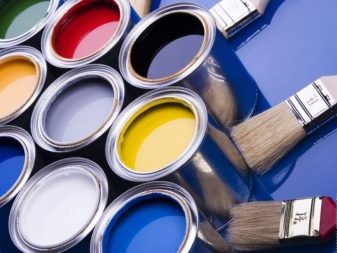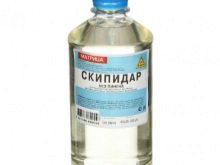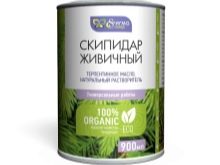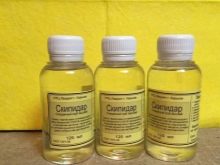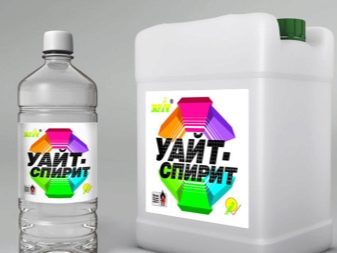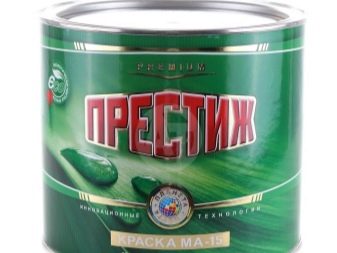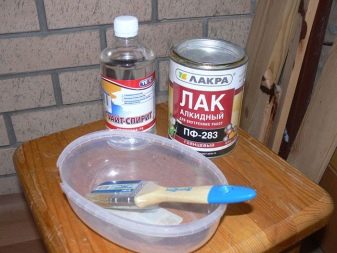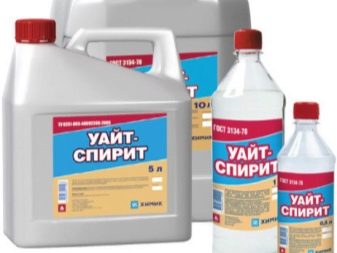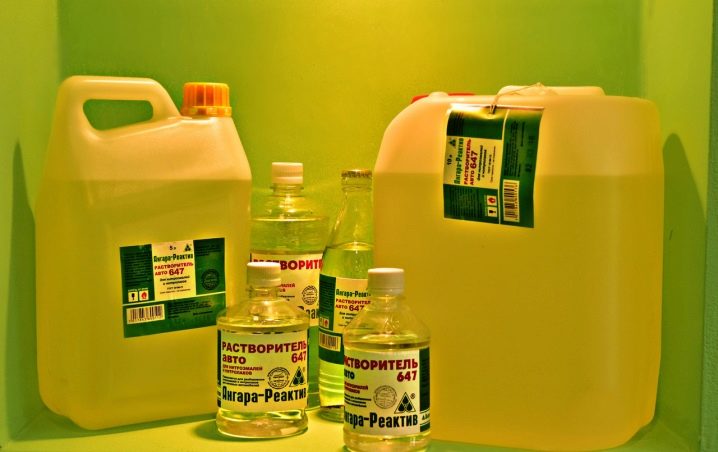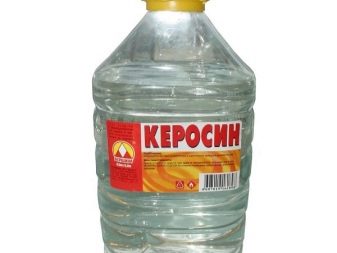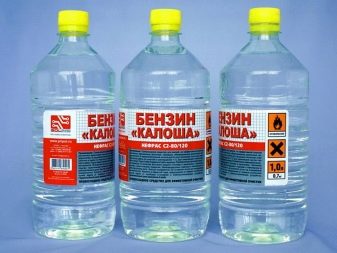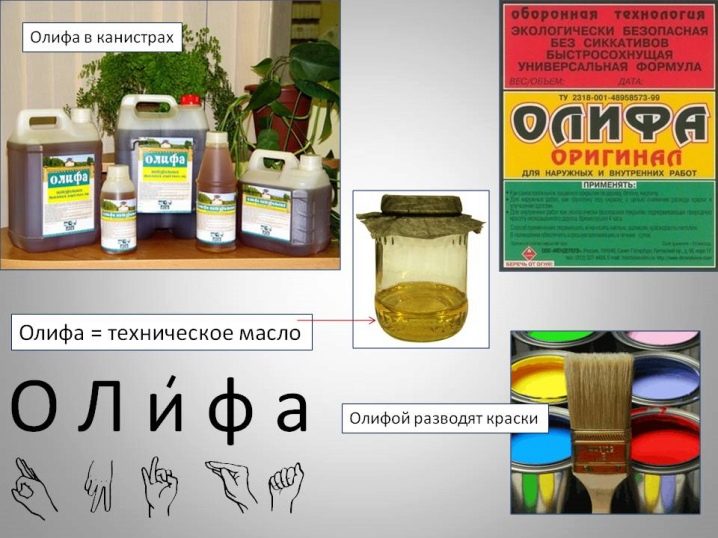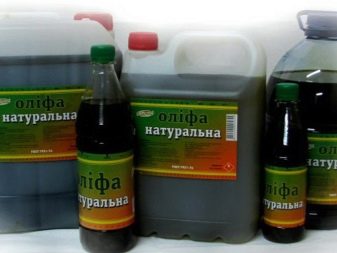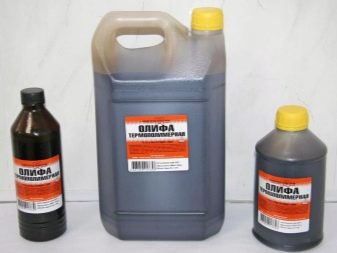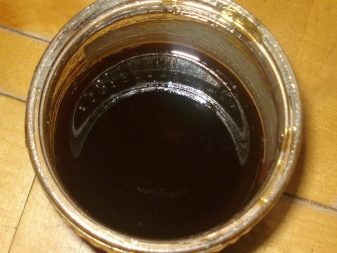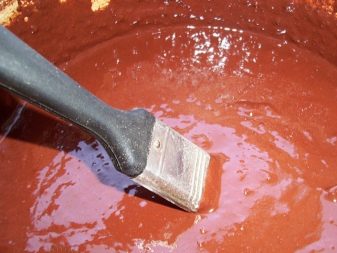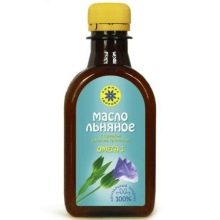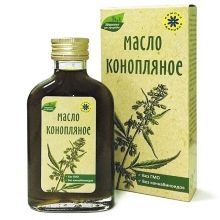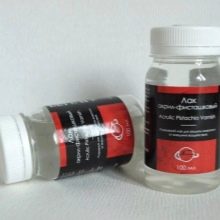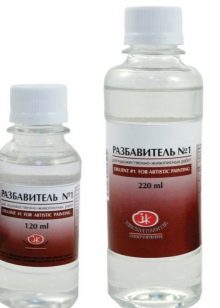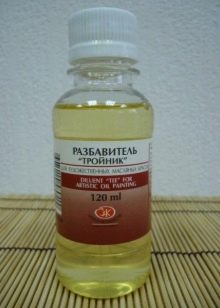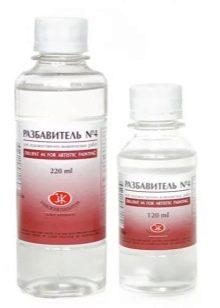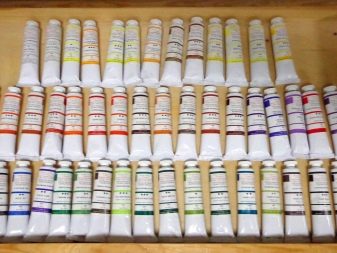What can dilute the oil paint?
Oil paints are realized in a different state. Some manufacturers produce ready-to-apply products, others - in a thicker or pasty form. To ensure high-quality application of the dye to the surface, a thinner must be added to it before use. Depending on the specific composition and the desired result, various substances are applied, giving the paints specific properties.
What to dilute?
It should immediately be determined that the entire list of oil dyes is divided into 2 large subspecies by purpose:
- household paints - solutions for painting various buildings and objects;
- art paints used for painting and refined decorating.
In order to bring the solution to the desired liquid state, a variety of diluents are used, such as:
- turpentine;
- White Spirit;
- Solvent 647;
- gasoline and kerosene;
- linseed oil and other.
rules
So that after adding a thinner the paint doesn’t deteriorate, you should follow these rules:
- First you need to assess the condition of the coloring solution. After opening the jar, its contents are thoroughly mixed. Due to the fact that the linseed oil is heavier than coloring pigments, it settles at the bottom.
- It is necessary to determine the ratio in which to add the diluent. Due to the inhomogeneous composition of paints, there is no single standard, but the volume of the infused substance cannot be more than 5% of the total volume of paint. When breeding a dye with white spirit in order to use it as a primer or base layer, this indicator rises to 10%. Before pouring in a diluting agent, it is possible to make a trial mixing in a glass, cup or other container. After determining the proportions, the solvent is poured directly into the can of paint. It is better to do this in small portions, simultaneously stirring the solution. So it will turn out more homogeneous.
- In the course of work, after some time, the paint may thicken again. This is due to the evaporation of the solvent, a small amount of which again "revive" the paint.
A number of difficulties arise at long finding of paint in the open air. To “put her back into operation,” you need to do the following:
- film formed on the surface of the paint must be carefully removed. If you interfere with it, the liquid will become non-uniform, with small lumps, which will not get rid of anymore.
- In a separate container, you need to mix a little kerosene and white spirit, pour the mixture into the paint, mix thoroughly. As well as during the initial mixing, it is better to pour the mixture in small portions, so as not to spoil the paint.
- You can start painting, or wait for the evaporation of kerosene, and then carry out an additional dilution with a small amount of white spirit.
The important point is safety. On the one hand, both paint and solvents are highly combustible substances. On the other hand, they, moreover, are also toxic, can cause dizziness, headaches, nausea and other ailments, so work should be done in a well-ventilated room.
For household paints
In the course of repair and finishing works, dyes are used with the classic composition of drying oil and various pigment substances. Such paints require thinning for several reasons:
- the paint is too thick. Some species are sold in a pasty condition;
- need a more liquid form for priming or applying a base layer;
- the tree is painted, to apply on which the thick layer is impractical - the paint will fall off;
- need to dilute the thickened residues from the previously used banks.
Turpentine
This substance based on coniferous resins is widely used as a thinner oil paints. Turpentine exudes a characteristic odor. It should be used in well ventilated areas. Purified turpentine reduces paint drying time. Depending on the composition is divided into several types. For breeding coloring compositions are used such options:
- Woody. It is made from various parts of the tree such as bark or branches. The quality is average.
- Pneumatic. The main raw materials are stumps of coniferous trees and other residues. The quality of this turpentine is the lowest.
- Turpentine Extracted directly from coniferous resins, and the composition of almost 100% - a mixture of essential oils. It has the best quality. Paints diluted with turpentine do not lose their qualities
White Spirit
This solvent has such characteristic features:
- there are odorless varieties;
- evaporation rate is lower than other solvents, which allows you to work in a measured rhythm, focusing on the result;
- does not change the color and tone of the dye;
- the standard solution is a weak solvent, but the purified version does the job well;
- affordable price;
- reduces paint consumption.
White spirit is used for various purposes, such as:
- creation of organo-dispersion when combined with lacquers.
- Cleaning up the working tools after painting.
- For receiving the fat-free surface under drawing a varnish.
- For dilution of varnish, varnish, enamels and other similar substances.
- As a solvent of rubber, alkyds and epoxides.
"Solvent 647"
Using this type of solvent, it is worth considering the following:
- if the substance is excessively added to the paint, its properties will deteriorate.Be sure to do test mixing to determine the proportions;
- has an unpleasant odor;
- flammable;
- used as a degreaser for the painted surface;
- used to bring paint to the ground solution;
- enhances the absorption of paint surface;
- requires thorough mixing with paint to obtain a homogeneous mixture.
Gasoline and kerosene
This option is used only in extreme cases in the absence of other types of solvents. These substances are very volatile and actively evaporate at room temperature. Their fumes are highly toxic, quickly causing poisoning, accompanied by nausea, dizziness, headaches and other symptoms. In addition, they are very flammable, and at high concentrations they are explosive. At dilution of an old thick paint, kerosene remains the best solution. Also, gasoline paint gives haze that can be used for decorative purposes.
Drying oil
Universal remedy for dilution of oil paints. Initially included in its composition as a diluent of pigment substances.There are many varieties of drying oil that should be considered when diluting the working solution. The characteristic features of this solvent include the following:
- linseed oil contributes to the formation of a thin film on the surface of the applied paint;
- with excessive adding of drying oil, the drying time of the applied layer will increase. To avoid such consequences, it is worth pouring the linseed oil in small portions, stirring thoroughly;
- to dilute the dye, must be used exactly the same type of linseed, as in its composition.
To find out what kind of linseed oil is needed to dilute the paint, you need to examine the label on the can. There are such common types:
- "MA-021". Paint with this marking contains natural linseed oil with a vegetable oil content of at least 95%, as well as about 4% of dryers.
- "GF-023". This subspecies solvent contains glyphthalic drying oil, the quality is close to natural.
- "MA-025". This label indicates the content of toxic components, the work with which requires caution. In addition, this composition has a specific unpleasant smell that lasts a long time even after the paint dries.
- "PF-024". The dye with this mark contains pentaphthalic linseed oil, glycerin and / or drying agents. The content of natural raw materials is around 50%.
Dilution of drying oil differs somewhat from dilution of other solvents and consists of the following steps:
- paint is poured into a convenient container for mixing and removing lumps;
- linseed oil is poured in small amounts and interferes carefully, the process is repeated until a suitable consistency is obtained;
- the solution is left for 7-10 minutes to “infuse”;
- then the mixture is passed through a sieve to eliminate clots and lumps.
For art paints
Artistic dyes, used for various kinds of drawing, decorative painting and other types of creativity, also require dilution before use. A characteristic feature is the special attention to color and properties of paint. This circumstance causes the use of more delicate solvents. For the cultivation of art oil-phthalic inks such substances are used:
- hemp, sunflower, linseed oil.
- Art varnishes - mixtures based on wood resin and solvent.Artistic paints, diluted with such varnishes, are more pliable, lay down more tightly, guaranteeing high-quality overlap. When frozen, the colors become brighter, shine better. This effect is difficult to obtain using only oil and thinner. In addition, increases the strength and stability of the frozen layer.
- "Thinner number 1" - a composition based on white spirit and turpentine, mainly woody. Good quality at an affordable price. It will help to breed any formulations.
- "Thinner number 4" based on pinene - gum turpentine, has excellent qualities, does not affect the tone. The price of such a solvent is also high.
- "Twins", consisting of gum turpentine and varnish or oil. Pinen liquefies the paint, while the oil enhances the binding properties of the pigment, and the lacquer increases the “density” of the paint layer, gives it color saturation, reduces the drying time, makes it more glossy.
- "Tees" include both pinene, and oil and varnish.
Dissolve the coloring compounds in the home is quite possible, it is worth using these tips. Dried blot can also be removed using the above tools.You can replace any tool with an analogue that you can buy without problems.
How to choose a thinner for oil paints, see below.
